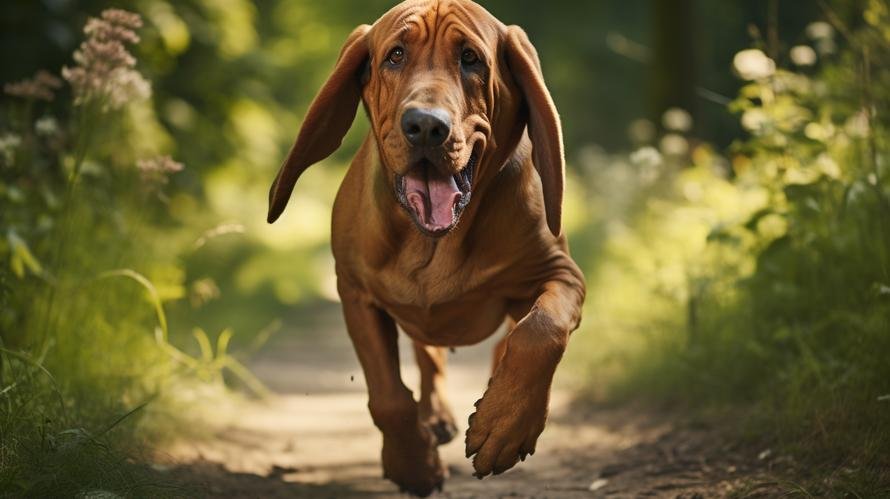Picture this…
Your backyard gate swings open and a chocolate pudding-smeared four-year-old grins at you from under a shock of golden hair. You help wipe the sticky mess off your rose bush and suddenly, a distant whir draws your attention. Your heart skips a beat as a drone hovers over the fence. On it is a sign that reads — “lost kid, go home” but junior has run amuck, your home is at least five blocks away, and you two have just moved in…
Sounds like a nightmare, right? But with a Bloodhound on your side, it’s just another day at the park!
Before you gasp at the idea of owning a breed notoriously known as a “slobbery and slow-witted hound,” hear me out. This breed, famed for their tracking abilities that even exceed those of a GPS, can not only keep up with your perpetually wandering toddler but is actually one of the healthiest dog breeds around!
Now, let’s delve deeper into why Bloodhounds make great pets, shall we?
Bloodhounds have been around since the medieval times and were initially known as the “hound of pure or noble blood.” Yeah, you heard right – these lovable goofballs have royal roots! And while they’ve ditched their crowns to take on modern-day detective roles, Bloodhounds retain their regal sturdiness, making them surprisingly healthy pooches.
Over the years, careful breeding has helped eliminate many diseases common in dogs, giving Bloodhounds a cleaner bill of health as compared to most breeds. But hold the biscuits, as that doesn’t mean they’re immune to every health issue. As a responsible pet owner, it’s vital to familiarize yourself with potential risks and learn how to spot early warning signs.
Some conditions to look out for in your Bloodhound involve the eyes, ears, heart, and skin. Cherry Eye, Entropion, and Gastric Dilatation Volvulus (Bloat) are amongst the main concerns. But worry not, with timely check-ups and vaccinations, most of these issues can be either prevented or managed effectively to ensure your furry friend stays in top shape.
Furthermore, another thing that makes Bloodhounds healthier than many other breeds is their relatively longer lifespan. With an average lifespan of 10-12 years, owning a Bloodhound means you’re in for a long, joyous ride!
On the flip side, the Bloodhound’s elongated lifespan means they can develop age-related ailments. These can range from hip and elbow dysplasia to hypothyroidism. But don’t fret just yet! Regular exercise and a balanced diet can help manage these conditions and keep your hound hale and hearty.
Now we know that Bloodhounds boast relatively robust health, but did you also know they emit positivity? Yes, these droopy faces are a perfect antidote for dreary, downcast days. Trust me; there’s nothing like coming home to their warm welcome, completed by that hugely wagging tail, to chase all your blues away. No wonder they’re often tapped as therapy dogs!
Undeniably, owning any pet comes with its set of challenges, and Bloodhounds are no exception. But with the right approach, these challenges can transform into high-fives of a job well done. Like any furkid, Bloodhounds need regular motion. Daily walks, fetch games, or even improvised treasure hunts can keep them mentally stimulated and physically fit.
Moreover, it’s essential to fuel their playful antics with proper nutrition. Remember, a balanced diet of proteins, carbs, vitamins, and minerals keeps ailments at bay and your Bloodhound’s energy levels high!
In conclusion, while Bloodhounds can be prone to certain health issues, the right care goes a long way in maintaining their well-being. With their long lifespans and unmatched loyalty, these loveable hounds are a healthy and wise addition to any family.
So, is a Bloodhound a healthy dog? Absolutely! Just remember to factor in regular vet checks, proper exercise, and a balanced diet. Then, sit back and watch your four-legged family member add joy, love, and health to your lives.



